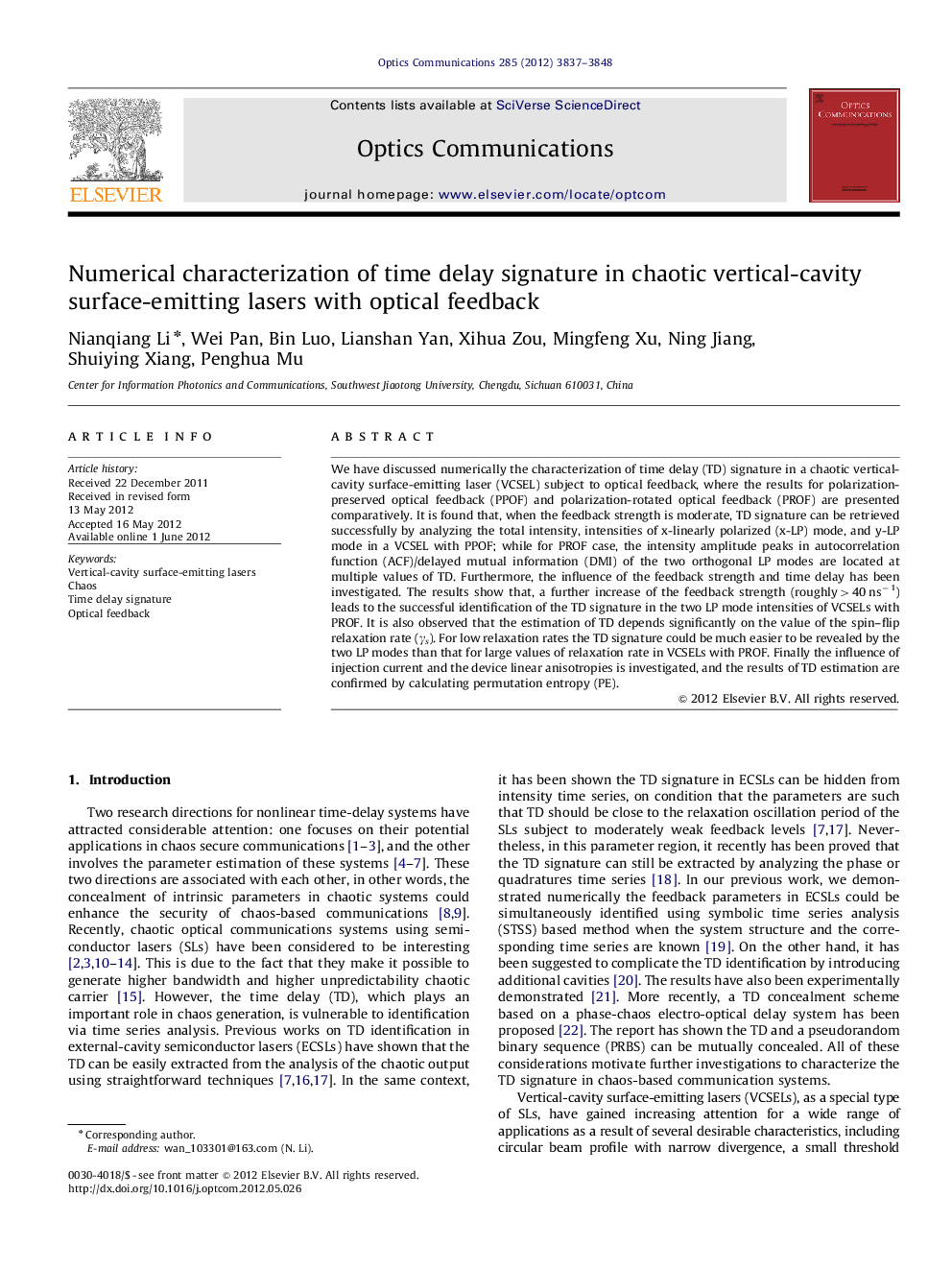| Article ID | Journal | Published Year | Pages | File Type |
|---|---|---|---|---|
| 1536087 | Optics Communications | 2012 | 12 Pages |
Abstract
We have discussed numerically the characterization of time delay (TD) signature in a chaotic vertical-cavity surface-emitting laser (VCSEL) subject to optical feedback, where the results for polarization-preserved optical feedback (PPOF) and polarization-rotated optical feedback (PROF) are presented comparatively. It is found that, when the feedback strength is moderate, TD signature can be retrieved successfully by analyzing the total intensity, intensities of x-linearly polarized (x-LP) mode, and y-LP mode in a VCSEL with PPOF; while for PROF case, the intensity amplitude peaks in autocorrelation function (ACF)/delayed mutual information (DMI) of the two orthogonal LP modes are located at multiple values of TD. Furthermore, the influence of the feedback strength and time delay has been investigated. The results show that, a further increase of the feedback strength (roughly>40 nsâ1) leads to the successful identification of the TD signature in the two LP mode intensities of VCSELs with PROF. It is also observed that the estimation of TD depends significantly on the value of the spin-flip relaxation rate (γs). For low relaxation rates the TD signature could be much easier to be revealed by the two LP modes than that for large values of relaxation rate in VCSELs with PROF. Finally the influence of injection current and the device linear anisotropies is investigated, and the results of TD estimation are confirmed by calculating permutation entropy (PE).
Related Topics
Physical Sciences and Engineering
Materials Science
Electronic, Optical and Magnetic Materials
Authors
Nianqiang Li, Wei Pan, Bin Luo, Lianshan Yan, Xihua Zou, Mingfeng Xu, Ning Jiang, Shuiying Xiang, Penghua Mu,
